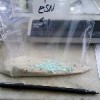 Enhanced-efficiency fertilizers are a group of fertilizers that reduce the risk of nutrient loss to the environment and subsequently increase fertilizer use efficiency. This increase may be accomplished through maintaining nutrients in the root zone by physical barriers, reduced solubility, or retaining nutrients in a less leachable form. This 7-page fact sheet examines laboratory, growth chamber, greenhouse, and field methods for measuring nitrogen release in controlled-release fertilizers. Written by Monica Ozores-Hampton and Luther C. Carson, and published by the UF Department of Horticultural Sciences, August 2013.
Enhanced-efficiency fertilizers are a group of fertilizers that reduce the risk of nutrient loss to the environment and subsequently increase fertilizer use efficiency. This increase may be accomplished through maintaining nutrients in the root zone by physical barriers, reduced solubility, or retaining nutrients in a less leachable form. This 7-page fact sheet examines laboratory, growth chamber, greenhouse, and field methods for measuring nitrogen release in controlled-release fertilizers. Written by Monica Ozores-Hampton and Luther C. Carson, and published by the UF Department of Horticultural Sciences, August 2013.
http://edis.ifas.ufl.edu/hs1227
Author: dihagan
Citrus Greening and Citrus Tree Planting in Florida
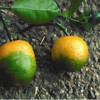 This 4-page fact sheet examines the impact of the presence of citrus greening on new tree plantings in the Florida citrus industry. Sweet oranges are by far the most important citrus variety grown in Florida, so the analysis is limited to sweet orange plantings. Because citrus greening impacts citrus producers through reduced yield, increased mortality, and increased cost of production, it is expected that the presence of citrus greening has had an adverse impact on the willingness of growers to invest in new trees. Written by Thomas H. Spreen and Jean-Paul Baldwin, and published by the UF Department of Food and Resource Economics, January 2014.
This 4-page fact sheet examines the impact of the presence of citrus greening on new tree plantings in the Florida citrus industry. Sweet oranges are by far the most important citrus variety grown in Florida, so the analysis is limited to sweet orange plantings. Because citrus greening impacts citrus producers through reduced yield, increased mortality, and increased cost of production, it is expected that the presence of citrus greening has had an adverse impact on the willingness of growers to invest in new trees. Written by Thomas H. Spreen and Jean-Paul Baldwin, and published by the UF Department of Food and Resource Economics, January 2014.
http://edis.ifas.ufl.edu/fe937
Native Plants That Benefit Native Wildlife in the Florida Panhandle
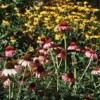 The key to enhancing wildlife (and attracting it to your property) is to provide the resources wildlife need. This means supplying food, water, and cover within the space you own and manage. Because the needs of each wildlife species for food and cover vary from one season to the next, a mix of plant species is required to meet the needs of a species all year round. And because each species has different needs, attracting and maintaining a wide variety of wildlife year round requires a wide diversity of plants. A property owner interested in attracting wildlife should nurture a wide variety of native plants to ensure that there is a large assortment of food and cover options available all the time. This 8-page fact sheet was written by Holly K. Ober and Gary W. Knox, and published by the UF Department of Wildlife Ecology and Conservation, October 2013.
The key to enhancing wildlife (and attracting it to your property) is to provide the resources wildlife need. This means supplying food, water, and cover within the space you own and manage. Because the needs of each wildlife species for food and cover vary from one season to the next, a mix of plant species is required to meet the needs of a species all year round. And because each species has different needs, attracting and maintaining a wide variety of wildlife year round requires a wide diversity of plants. A property owner interested in attracting wildlife should nurture a wide variety of native plants to ensure that there is a large assortment of food and cover options available all the time. This 8-page fact sheet was written by Holly K. Ober and Gary W. Knox, and published by the UF Department of Wildlife Ecology and Conservation, October 2013.
http://edis.ifas.ufl.edu/uw384
Common Sharks of Florida
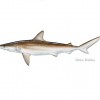 Florida’s shark population is diverse and includes species that range in size from only a few feet to more than 40 feet in total length. Experts caution sea-goers to beware of sharks 6 feet or longer due to the damage they can cause in a single bite. Among the species that grow to this size and have been known to attack humans are bull sharks, tiger sharks and great white sharks. Whites are seasonal visitors to Florida waters, and bulls and tigers are year-round residents, along with these other common species. This 4-page fact sheet was written by Florida Sea Grant, and published by the UF Department of Sea Grant, September 2014.
Florida’s shark population is diverse and includes species that range in size from only a few feet to more than 40 feet in total length. Experts caution sea-goers to beware of sharks 6 feet or longer due to the damage they can cause in a single bite. Among the species that grow to this size and have been known to attack humans are bull sharks, tiger sharks and great white sharks. Whites are seasonal visitors to Florida waters, and bulls and tigers are year-round residents, along with these other common species. This 4-page fact sheet was written by Florida Sea Grant, and published by the UF Department of Sea Grant, September 2014.
http://edis.ifas.ufl.edu/sg062
Facts about Vitamin D
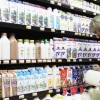 Vitamin D is needed for normal absorption of calcium and phosphorus. It helps put these minerals into bones and teeth. This makes bones stronger and reduces risk for bone fractures. Vitamin D also helps keep the immune system functioning normally, so our bodies can resist some types of disease. This 2-page fact sheet was written by Linda B. Bobroff and Isabel Valentín-Oquendo, and published by the UF Department of Family Youth and Community Sciences, February 2014.
Vitamin D is needed for normal absorption of calcium and phosphorus. It helps put these minerals into bones and teeth. This makes bones stronger and reduces risk for bone fractures. Vitamin D also helps keep the immune system functioning normally, so our bodies can resist some types of disease. This 2-page fact sheet was written by Linda B. Bobroff and Isabel Valentín-Oquendo, and published by the UF Department of Family Youth and Community Sciences, February 2014.
http://edis.ifas.ufl.edu/fy207
Los alimentos en pure y la fibra
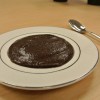 La fibra es importante para la buena salud. El consumo inadecuado de fibra puede conducir al estreñimiento y a otros problemas gastrointestinales. Las dietas altas en fibra pueden ayudar a reducir el colesterol y la glucosa en la sangre, lo que reduce el riesgo de las enfermedades del corazón. Aunque la fibra se encuentra en todos los alimentos de origen vegetal como las frutas, los vegetales, los granos, las nueces y las semillas, la mayoría de las personas no consumen lo suficiente.The English version of this document is FSHN12-16/FS209 Puréed Foods and Fiber. This 4-page fact sheet was written by Wendy J. Dahl, and published by the UF Department of Food Science and Human Nutrition, December 2013.
La fibra es importante para la buena salud. El consumo inadecuado de fibra puede conducir al estreñimiento y a otros problemas gastrointestinales. Las dietas altas en fibra pueden ayudar a reducir el colesterol y la glucosa en la sangre, lo que reduce el riesgo de las enfermedades del corazón. Aunque la fibra se encuentra en todos los alimentos de origen vegetal como las frutas, los vegetales, los granos, las nueces y las semillas, la mayoría de las personas no consumen lo suficiente.The English version of this document is FSHN12-16/FS209 Puréed Foods and Fiber. This 4-page fact sheet was written by Wendy J. Dahl, and published by the UF Department of Food Science and Human Nutrition, December 2013.
http://edis.ifas.ufl.edu/fs238
Food Safety: High Risk Foods Crossword
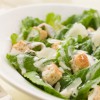 Some foods are more likely to cause foodborne illness than others. Unpasteurized milk or juices are not safe to consume. Uncooked foods that are made with raw or undercooked eggs are especially risky. This 2-page fact sheet was written by Linda B. Bobroff and Jennifer Hillan, and published by the UF Department of Family Youth and Community Sciences, February 2014.
Some foods are more likely to cause foodborne illness than others. Unpasteurized milk or juices are not safe to consume. Uncooked foods that are made with raw or undercooked eggs are especially risky. This 2-page fact sheet was written by Linda B. Bobroff and Jennifer Hillan, and published by the UF Department of Family Youth and Community Sciences, February 2014.
http://edis.ifas.ufl.edu/fy927
Corn wireworm Melanotus communis Gyllenhal (Insecta: Coleoptera: Elateridae)
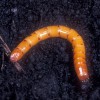 Insects in the family Elateridae are commonly known as click beetles. Their name comes from the clicking sound they make while attempting to right themselves after falling or being placed on their backs. The larvae of click beetles are called wireworms. The corn wireworm is a serious agricultural pest and was added to the EPPO A1 action list of quarantine pests in 2002. This 6-page fact sheet was written by Harsimran K. Gill, Gurminder Chahil, Gaurav Goyal, Jennifer L. Gillett-Kaufman and Ronald Cherry, and published by the UF Department of Entomology and Nematology, January 2014.
Insects in the family Elateridae are commonly known as click beetles. Their name comes from the clicking sound they make while attempting to right themselves after falling or being placed on their backs. The larvae of click beetles are called wireworms. The corn wireworm is a serious agricultural pest and was added to the EPPO A1 action list of quarantine pests in 2002. This 6-page fact sheet was written by Harsimran K. Gill, Gurminder Chahil, Gaurav Goyal, Jennifer L. Gillett-Kaufman and Ronald Cherry, and published by the UF Department of Entomology and Nematology, January 2014.
http://edis.ifas.ufl.edu/in1025
Nematode Management for Bedding Plants
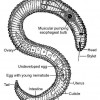 Florida is the “land of flowers.” Surely, one of the things that Florida is known for is the beauty of its vegetation. Due to the tropical and subtropical environment, color can abound in Florida landscapes year-round. Unfortunately, plants are not the only organisms that enjoy the mild climate. Due to warm temperatures, sandy soil, and humidity, Florida has more than its fair share of pests and pathogens that attack bedding plants. Plant-parasitic nematodes can be among the most damaging and hard-to-control of these organisms. This 11-page fact sheet was written by William T. Crow, and published by the UF Department of Entomology and Nematology, February 2014.
Florida is the “land of flowers.” Surely, one of the things that Florida is known for is the beauty of its vegetation. Due to the tropical and subtropical environment, color can abound in Florida landscapes year-round. Unfortunately, plants are not the only organisms that enjoy the mild climate. Due to warm temperatures, sandy soil, and humidity, Florida has more than its fair share of pests and pathogens that attack bedding plants. Plant-parasitic nematodes can be among the most damaging and hard-to-control of these organisms. This 11-page fact sheet was written by William T. Crow, and published by the UF Department of Entomology and Nematology, February 2014.
http://edis.ifas.ufl.edu/in470
Erect and Prostrate Spurge Biology and Management in Turf
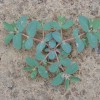 Erect and prostrate spurges are erect or upright annuals with branched stems. Leaves are opposite and not equal. Stems produce “milky sap.” A large number of spurge species occur in Florida. Reproduction occurs via seed. This 2-page fact sheet was written by J. Bryan Unruh, Darcy E. P. Telenko, Barry J. Brecke, and Ramon Leon, and published by the UF Department of Environmental Horticulture, December 2013.
Erect and prostrate spurges are erect or upright annuals with branched stems. Leaves are opposite and not equal. Stems produce “milky sap.” A large number of spurge species occur in Florida. Reproduction occurs via seed. This 2-page fact sheet was written by J. Bryan Unruh, Darcy E. P. Telenko, Barry J. Brecke, and Ramon Leon, and published by the UF Department of Environmental Horticulture, December 2013.
http://edis.ifas.ufl.edu/ep495
Complying with Farm Labor Regulations: Correctly Counting Compensable Hours
 United States law requires farm employers to keep accurate records of the number of daily compensable hours worked by their seasonal and migrant farm workers. The most prevalent and serious violations occur when agricultural employers do not correctly record the daily start and stop times for seasonal and migrant farm workers and so underreport the number of “compensable” hours for each worker. The purpose of this article is to discuss the concept of “compensable” hours in more detail and eliminate any confusion that might lead agricultural employers to make costly mistakes. This 4-page fact sheet was written by Fritz M. Roka and Michael T. Bayer, and published by the UF Department of Food and Resource Economics, February 2014.
United States law requires farm employers to keep accurate records of the number of daily compensable hours worked by their seasonal and migrant farm workers. The most prevalent and serious violations occur when agricultural employers do not correctly record the daily start and stop times for seasonal and migrant farm workers and so underreport the number of “compensable” hours for each worker. The purpose of this article is to discuss the concept of “compensable” hours in more detail and eliminate any confusion that might lead agricultural employers to make costly mistakes. This 4-page fact sheet was written by Fritz M. Roka and Michael T. Bayer, and published by the UF Department of Food and Resource Economics, February 2014.
http://edis.ifas.ufl.edu/fe940
Are Profit and Profitability the Same Thing?
 The terms “profit” and “profitability” are used quite frequently in everyday talk to mean the same thing. We often hear someone say “my business made a profit last year” or “my business was profitable.” But are the two statements equivalent? In this article, I’ll explain the two terms, outlining the difference between them, and discussing a few things that growers can do to improve the profitability of a farm business. This 4-page fact sheet was written by Edward Evans, and published by the UF Department of Food and Resource Economics, February 2014.
The terms “profit” and “profitability” are used quite frequently in everyday talk to mean the same thing. We often hear someone say “my business made a profit last year” or “my business was profitable.” But are the two statements equivalent? In this article, I’ll explain the two terms, outlining the difference between them, and discussing a few things that growers can do to improve the profitability of a farm business. This 4-page fact sheet was written by Edward Evans, and published by the UF Department of Food and Resource Economics, February 2014.
http://edis.ifas.ufl.edu/fe939
2013 Evaluation of Non-Irrigated Mid- to Full-Season Maturing Cotton Varieties in Jay, Florida
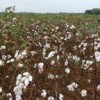 This report includes a summary of the 2013 mid- to full-season cotton Official Variety Trial in Jay, Florida. It shows the performance of 16 cotton varieties. This data represents only one year and one location, and readers are cautioned that test results should be considered over several locations and years before final conclusions are valid. This 5-page fact sheet was written by Darcy E. P. Telenko and Michael Donahoe, and published by the UF Department of Agronomy, January 2014.
This report includes a summary of the 2013 mid- to full-season cotton Official Variety Trial in Jay, Florida. It shows the performance of 16 cotton varieties. This data represents only one year and one location, and readers are cautioned that test results should be considered over several locations and years before final conclusions are valid. This 5-page fact sheet was written by Darcy E. P. Telenko and Michael Donahoe, and published by the UF Department of Agronomy, January 2014.
http://edis.ifas.ufl.edu/ag377
Hydrilla leafcutter moth (unofficial common name) Parapoynx diminutalis Snellen (Insecta: Lepidoptera: Crambidae)
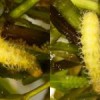 Parapoynx diminutalis Snellen is an adventive Asian moth with an aquatic larval stage. The moth is found associated with a variety of water bodies including river backwaters, lakes, and ponds. The aquatic larvae commonly attack hydrilla and other aquatic plants. The moth was identified in 1971 in India and Pakistan during scouting trips to attempt to determine potential biological control agents for hydrilla. Despite having potential for hydrilla destruction, the moth was declared to be a generalist feeder and unsuitable for release into U.S. water bodies for hydrilla control. But the moth was later found in Florida in 1976 by United States Department of Agriculture technicians who were testing herbicides for hydrilla control. The larvae found on hydrilla were observed to be eating the invasive weed. The pathway, method, or time of the moth’s arrival remains unknown. This 5-page fact sheet was written by Julie Baniszewski, Emma N.I. Weeks, and James P. Cuda, and published by the UF Department of Entomology and Nematology, January 2014.
Parapoynx diminutalis Snellen is an adventive Asian moth with an aquatic larval stage. The moth is found associated with a variety of water bodies including river backwaters, lakes, and ponds. The aquatic larvae commonly attack hydrilla and other aquatic plants. The moth was identified in 1971 in India and Pakistan during scouting trips to attempt to determine potential biological control agents for hydrilla. Despite having potential for hydrilla destruction, the moth was declared to be a generalist feeder and unsuitable for release into U.S. water bodies for hydrilla control. But the moth was later found in Florida in 1976 by United States Department of Agriculture technicians who were testing herbicides for hydrilla control. The larvae found on hydrilla were observed to be eating the invasive weed. The pathway, method, or time of the moth’s arrival remains unknown. This 5-page fact sheet was written by Julie Baniszewski, Emma N.I. Weeks, and James P. Cuda, and published by the UF Department of Entomology and Nematology, January 2014.
http://edis.ifas.ufl.edu/in1024
Erythrina leafminer (suggested common name); Leucoptera erythrinella Busck, 1900 (Insecta: Lepidoptera: Lyonetiidae)
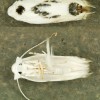 The erythrina leafminer is a member of the genus Leucoptera, which are leaf borers that can cause severe damage to plant crops, such as coffee or apples. Even though these moths are 1/20 to 1/10 the size of an average moth, they can cause serious damage. Leucoptera erythrinella is a pest of the coral bean and other members of the genus Erythrina. The larvae feed inside the leaves, making elaborate and characteristic mines, which from a distance appear to be discolorations of the leaf itself. This 5-page fact sheet was written by Andrei Sourakov, and published by the UF Department of Entomology and Nematology, January 2014.
The erythrina leafminer is a member of the genus Leucoptera, which are leaf borers that can cause severe damage to plant crops, such as coffee or apples. Even though these moths are 1/20 to 1/10 the size of an average moth, they can cause serious damage. Leucoptera erythrinella is a pest of the coral bean and other members of the genus Erythrina. The larvae feed inside the leaves, making elaborate and characteristic mines, which from a distance appear to be discolorations of the leaf itself. This 5-page fact sheet was written by Andrei Sourakov, and published by the UF Department of Entomology and Nematology, January 2014.
http://edis.ifas.ufl.edu/in1023
Tree Risk Assessment Methods: A Comparison of Three Common Evaluation Forms
 All trees pose some level of risk to nearby people, structures, and utilities. As trees age or become weakened by pests, disease, and/or other stresses, a tree owner or manager may need to decide what risk level he or she is willing to accept and what modifications may be needed. Experienced arborists can aid in this decision process by conducting a professional risk assessment that specifies the likelihood of whole or partial tree failure, the consequences of such a failure, and the potential targets affected. A variety of risk assessment methods have been developed to guide professionals through the tree inspection process. In North America, three risk assessment methods have gained the greatest acceptance among tree care professionals, municipal urban forestry programs, and government agencies. This 8-page fact sheet was written by Andrew K. Koeser, Gitta Hasing, Drew McLean, and Rob Northrop, and published by the UF Department of Environmental Horticulture, November 2013.
All trees pose some level of risk to nearby people, structures, and utilities. As trees age or become weakened by pests, disease, and/or other stresses, a tree owner or manager may need to decide what risk level he or she is willing to accept and what modifications may be needed. Experienced arborists can aid in this decision process by conducting a professional risk assessment that specifies the likelihood of whole or partial tree failure, the consequences of such a failure, and the potential targets affected. A variety of risk assessment methods have been developed to guide professionals through the tree inspection process. In North America, three risk assessment methods have gained the greatest acceptance among tree care professionals, municipal urban forestry programs, and government agencies. This 8-page fact sheet was written by Andrew K. Koeser, Gitta Hasing, Drew McLean, and Rob Northrop, and published by the UF Department of Environmental Horticulture, November 2013.
http://edis.ifas.ufl.edu/ep487
Impatiens Downy Mildew
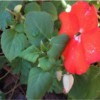 Downy mildew on impatiens is of great concern throughout Florida. Winters in south Florida provide high humidity paired with cool nights, creating ideal conditions for disease development. Downy mildews are caused by several different species of pathogens that tend to be plant-host specific. Plasmopara obducens is the pathogen that affects impatiens. Some literature indicates that nighttime temperatures of about 50 to 72°F favor downy mildew, but the disease has been reported on impatiens year round in south Florida. This 4-page fact sheet was written by L. Sanagorski, B. Schall, A.J. Palmateer, and N.A. Peres, and published by the UF Department of Plant Pathology, October 2013.
Downy mildew on impatiens is of great concern throughout Florida. Winters in south Florida provide high humidity paired with cool nights, creating ideal conditions for disease development. Downy mildews are caused by several different species of pathogens that tend to be plant-host specific. Plasmopara obducens is the pathogen that affects impatiens. Some literature indicates that nighttime temperatures of about 50 to 72°F favor downy mildew, but the disease has been reported on impatiens year round in south Florida. This 4-page fact sheet was written by L. Sanagorski, B. Schall, A.J. Palmateer, and N.A. Peres, and published by the UF Department of Plant Pathology, October 2013.
http://edis.ifas.ufl.edu/pp309
Healing Chamber for Grafted Vegetable Seedlings in Florida
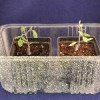 Grafting is a horticultural technology that combines two plants, the scion and the rootsock, to create a plant with desirable features from both parts. In the United States the use of vegetable grafting in field production remains limited, although 70% of the total hydroponic greenhouse tomato area uses grafted seedlings. Large, commercial grafting operations use controlled-environment growth chambers, but the high cost limits their use in most small-scale grafting operations. Healing chambers are an alternative solution that provides proper healing at a lower cost for growers and researchers. This 5-page fact sheet was written by Monica Ozores-Hampton and Aline Coelho Frasca, and published by the UF Department of Horticultural Sciences, October 2013.
Grafting is a horticultural technology that combines two plants, the scion and the rootsock, to create a plant with desirable features from both parts. In the United States the use of vegetable grafting in field production remains limited, although 70% of the total hydroponic greenhouse tomato area uses grafted seedlings. Large, commercial grafting operations use controlled-environment growth chambers, but the high cost limits their use in most small-scale grafting operations. Healing chambers are an alternative solution that provides proper healing at a lower cost for growers and researchers. This 5-page fact sheet was written by Monica Ozores-Hampton and Aline Coelho Frasca, and published by the UF Department of Horticultural Sciences, October 2013.
http://edis.ifas.ufl.edu/hs1232
Faber’s Maple: Acer fabri
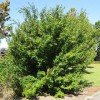 Faber's Maple is unlike the maples familiar to most people, as it does not have the typical three- or five-lobed leaves. Instead, the leaves of Faber's maple are unlobed, slender, and very glossy. Additionally, most people know the maple as a deciduous tree, dropping its leaves in fall, whereas Faber's maple is evergreen. This 2-page fact sheet was written by Gary W. Knox, and published by the UF Department of Environmental Horticulture, December 2013.
Faber's Maple is unlike the maples familiar to most people, as it does not have the typical three- or five-lobed leaves. Instead, the leaves of Faber's maple are unlobed, slender, and very glossy. Additionally, most people know the maple as a deciduous tree, dropping its leaves in fall, whereas Faber's maple is evergreen. This 2-page fact sheet was written by Gary W. Knox, and published by the UF Department of Environmental Horticulture, December 2013.
http://edis.ifas.ufl.edu/ep490
Veggies and Herbs: Made in the Shade A Growing Season Calendar for North Florida
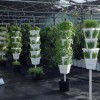 The importance of using an open shade structure for hydroponic crop culture in Florida has recently increased. Prior to the turn of the century, hydroponic culture in Florida was done inside a greenhouse structure, but it has now expanded to several other types of structures. In addition to greenhouses, production now exists in high tunnels, insect screens or net houses, and open shade-covered structures. In southern parts of Florida, outdoor hydroponic systems without any structure are becoming more common. In those cases, many operations use a polypropylene cover for freeze protection. Diversifying structures stems from growers’ desires to extend the season to meet consumer demand for a longer time period. The purpose of this publication is to indicate what crops have been successfully grown under shade in northern Florida at various times of the year. This 4-page fact sheet was written by Daniel K. Fenneman, Robert C. Hochmuth, Wanda L. Laughlin, and Sean R. McCoy, and published by the UF Department of Horticultural Sciences, November 2014.
The importance of using an open shade structure for hydroponic crop culture in Florida has recently increased. Prior to the turn of the century, hydroponic culture in Florida was done inside a greenhouse structure, but it has now expanded to several other types of structures. In addition to greenhouses, production now exists in high tunnels, insect screens or net houses, and open shade-covered structures. In southern parts of Florida, outdoor hydroponic systems without any structure are becoming more common. In those cases, many operations use a polypropylene cover for freeze protection. Diversifying structures stems from growers’ desires to extend the season to meet consumer demand for a longer time period. The purpose of this publication is to indicate what crops have been successfully grown under shade in northern Florida at various times of the year. This 4-page fact sheet was written by Daniel K. Fenneman, Robert C. Hochmuth, Wanda L. Laughlin, and Sean R. McCoy, and published by the UF Department of Horticultural Sciences, November 2014.
http://edis.ifas.ufl.edu/hs1228